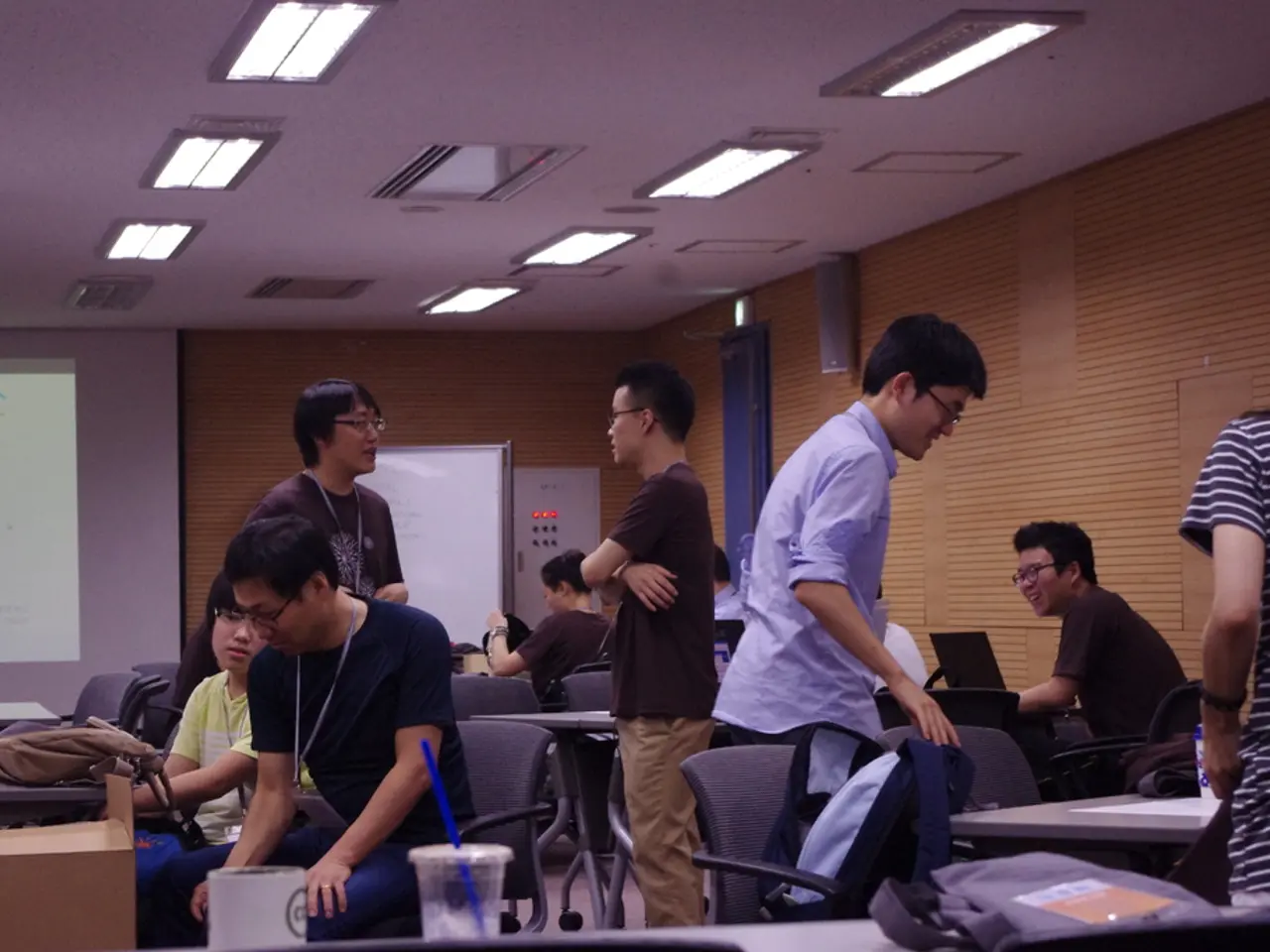Utilizing Virtual Reality Equipment for English Language Practice Sessions
Virtual Reality (VR) is revolutionising the way people learn English, offering a unique and engaging approach to language acquisition. By creating immersive, contextualised, and interactive learning environments, VR tools are helping learners improve their communication skills, cultural understanding, and confidence in using the language.
One of the key advantages of VR is its ability to provide **immersive and contextualised learning**. Learners can practice everyday activities such as ordering food, shopping, or attending meetings in a virtual environment, thus learning language skills in context rather than through rote memorisation. This approach mirrors natural dialogue and supports gradual language acquisition through experience.
VR also enhances **engagement and confidence** among learners. The pressure-free environments created by VR encourage experimentation and practice, which are crucial for improving speaking and listening skills. The immersive nature of VR also fosters a sense of presence, making learners feel more absorbed in the experience, thereby increasing motivation and engagement.
VR tools are designed to help learners **improve their communication skills**. Interactive conversations with virtual characters or other learners allow for repeated practice in realistic settings, significantly improving pronunciation, fluency, and conversational skills.
Moreover, VR provides learners with **cultural exposure and natural dialogue**. By simulating cultural nuances and casual dialogues, learners can pick up slang, idiomatic expressions, and social cues, which are essential for functional language use beyond formal learning contexts.
Some VR platforms incorporate **speech recognition and AI** to provide immediate feedback on pronunciation and grammar, allowing learners to adjust and improve their skills in real-time. This feedback-oriented learning approach is a significant advantage over traditional methods.
VR also reduces **anxiety associated with traditional language testing** by making learning more interactive and enjoyable. This can help learners achieve better outcomes by reducing exam stress and maintaining motivation.
In summary, VR offers **interactive, immersive, context-rich experiences** that enhance engagement, communication skills, cultural understanding, and confidence in language use, making it a powerful tool for effective English language acquisition.
It's important to note that a VR headset and a compatible device are essential for using VR tools for language learning. Examples of such tools include Mondly, ENGAGE, and AltspaceVR. VR changes traditional language immersion by simulating an immersive environment right from the comfort of one's home.
However, it's crucial to monitor usage time, particularly for younger learners, to ensure a balanced approach to screen exposure and rest.
References: [1] Mondly VR. (n.d.). Retrieved from https://www.mondly.com/vr/ [2] ENGAGE VR. (n.d.). Retrieved from https://engagevr.com/ [3] AltspaceVR. (n.d.). Retrieved from https://www.altvr.com/ [4] Gao, H., & Cui, Y. (2019). A Review on Virtual Reality and Language Learning. Journal of Educational Technology Development and Exchange, 10(1), 1-17. [5] Mills, K., & Bailenson, J. N. (2016). Virtual Reality for Language Learning: A Review of the State of the Field. Language Learning & Technology, 20(3), 387-411.
Listening exercises can be enhanced with the use of technology, particularly Virtual Reality (VR), as it offers immersive and realistic conversational interactions with virtual characters, promoting gradual pronunciation and fluency improvement. Furthermore, incorporating gadgets such as VR headsets into learning process can provide learners with a variety of engaging and interactive language learning experiences, thereby fostering cultural understanding and confidence in using English.







